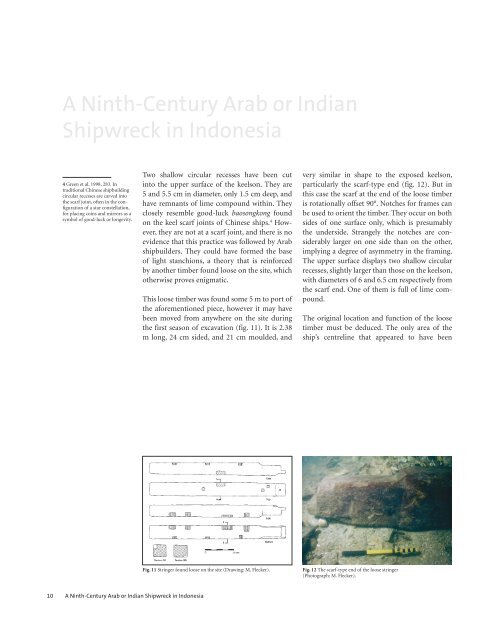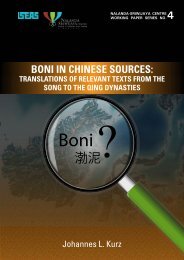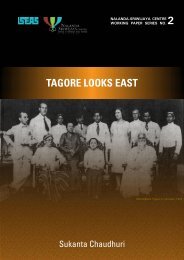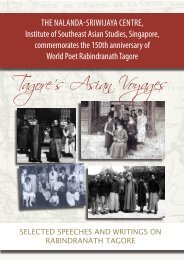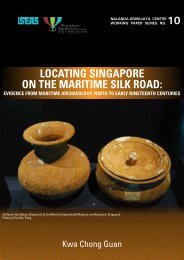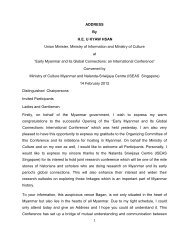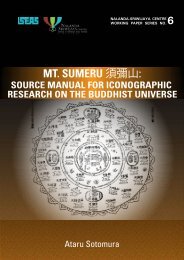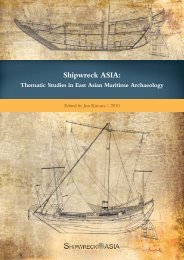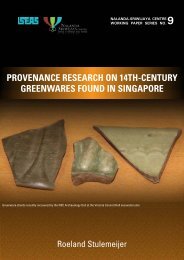You also want an ePaper? Increase the reach of your titles
YUMPU automatically turns print PDFs into web optimized ePapers that Google loves.
A Ninth-Century Arab or Indian<br />
Shipwreck in Indonesia<br />
4 Green et al. 1998, 283. In<br />
traditional Chinese shipbuilding<br />
circular recesses are carved into<br />
the scarf joint, often in the configuration<br />
of a star constellation,<br />
for placing coins and mirrors as a<br />
symbol of good-luck or longevity.<br />
Two shallow circular recesses have been cut<br />
into the upper surface of the keelson. They are<br />
5 and 5.5 cm in diameter, only 1.5 cm deep, and<br />
have remnants of lime compound within. They<br />
closely resemble good-luck baosongkong found<br />
on the keel scarf joints of Chinese ships. 4 However,<br />
they are not at a scarf joint, and there is no<br />
evidence that this practice was followed by Arab<br />
shipbuilders. They could have formed the base<br />
of light stanchions, a theory that is reinforced<br />
by another timber found loose on the site, which<br />
otherwise proves enigmatic.<br />
This loose timber was found some 5 m to port of<br />
the aforementioned piece, however it may have<br />
been moved from anywhere on the site during<br />
the first season of excavation (fig. 11). It is 2.38<br />
m long, 24 cm sided, and 21 cm moulded, and<br />
very similar in shape to the exposed keelson,<br />
particularly the scarf-type end (fig. 12). But in<br />
this case the scarf at the end of the loose timber<br />
is rotationally offset 90°. Notches for frames can<br />
be used to orient the timber. They occur on both<br />
sides of one surface only, which is presumably<br />
the underside. Strangely the notches are considerably<br />
larger on one side than on the other,<br />
implying a degree of asymmetry in the framing.<br />
The upper surface displays two shallow circular<br />
recesses, slightly larger than those on the keelson,<br />
with diameters of 6 and 6.5 cm respectively from<br />
the scarf end. One of them is full of lime compound.<br />
The original location and function of the loose<br />
timber must be deduced. The only area of the<br />
ship’s centreline that appeared to have been<br />
Fig. 11 Stringer found loose on the site (Drawing: M. <strong>Flecker</strong>).<br />
Fig. 12 The scarf-type end of the loose stringer<br />
(Photograph: M. <strong>Flecker</strong>).<br />
10 A Ninth-Century Arab or Indian Shipwreck in Indonesia


